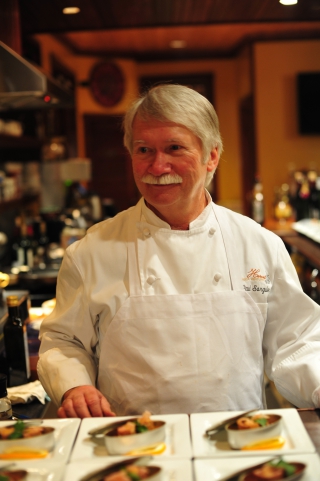
What Goes Around Comes Around
30 September 2016Apprentices were extensively employed for generations through the Guild System. Should administrators come back around to the old structure?
By Paul Sorgule, MS, AAC
If culinary schools can recognize there is a need for change – then what direction should they take? In last month’s Think Tank article I pointed to the many significant challenges faced by culinary educators and administrators; now, let’s begin to sift through some potential solutions.
“What goes around comes around” is the basic premise of Karma – inferring that a person’s situation, or in this case industry, may likely be connected to something they (or it) had a hand in creating. It can also imply that what once worked may have real value again in the future.
Just a few decades ago, the restaurant industry accepted the fact that the training of cooks and even managers took place on the job. Historically, the model, both formal and informal, was based on the well-established Guild System that had been used in Europe for generations. This system of apprentice, journeyman, and master was applied to trades and professions and remains, to a degree, alive and well in countries such as France, Germany, Italy, and England. The skills necessary to be considered “accomplished” were progressive, structured, disciplined, and evident. Those who are a product of the European system will often reflect on it as bittersweet with the physical and emotional scars to demonstrate the “no pain, no gain” mentality that existed (and still may in some cases). The critical point is that there is ample proof to demonstrate that the process was (is) effective.
A few decades ago, the U.S. restaurant industry began the process of relegating much of their responsibility for training to a growing presence of culinary programs offering degrees. Within a short period of time, it became apparent the industry had passed the torch to these schools – now expecting graduates to be as ready as a journeyman might have been a few decades prior.
The challenge was less emphasis was placed on the “experience is the best educator” formula, leaving schools with the task of trying to replicate the positive aspects of industry experience. Internships and externships helped bridge the gap, but at the same time were obviously limited due to time. The cost of delivering this educational model drove tuition and other expenses to a point where graduates found it increasingly difficult to repay loans on the salaries they could expect in their initial years on the job. Today’s dilemma (Karma) is something that both colleges and the industry served can look in a mirror and for which they can accept responsibility.
Is it time to entertain the Apprenticeship Model (the Guild System) once again? Can colleges remain involved in the training and teaching process and would the restaurant industry step up again as a primary contributor to the process of training tomorrow’s cooks and chefs? Let’s build a case and look at the advantages of such a shift:
- Application of progressive skills in an environment where repetition can build competence has tremendous value.
- Skill competence is built on repetition.
- Speed and dexterity are difficult to build in a classroom lab environment – it takes the pressure of time and demand to build confidence.
- Once foundational skills and understanding are developed in a controlled classroom environment, real-life experience will take students to the next level. Without sufficient realistic experience, real skill development will suffer.
- When an apprenticeship site is engaged in the process of training they become vested in the school and in the student. In most cases, an effective apprenticeship will lead to a permanent job.
- Close communication between schools and sites, which goes hand-in-hand with apprenticeship, will lead to improved curriculum and substantially better student outcomes.
- The commitment required for apprenticeship will help minimize the current challenges that partnering restaurants experience with staff shortages.
- For the college, a well thought-out apprenticeship model can help to minimize the need for some of the current requirement for expensive kitchen space. Finding professional, well-equipped partner sites with a commitment to their role in apprenticeship can alleviate some of this financial burden.
- Students (apprentices) while enrolled in a school’s apprenticeship model are paid while they are building skills and learning. This will help to significantly reduce the burden of debt that many students are currently faced with.
A school’s faculty and administration are required to play an active role, on- and off-site, with the partner properties to ensure training follows established methods, is well managed, and provides adequate professional assessment. As a side benefit, this allows your faculty to stay current with the demands of industry and new approaches toward the preparation and presentation of quality food products.
Over the next few months we will take a look at the components of apprenticeship, how to marry the experiential model with current degree requirements, and point to some examples of schools that are adopting unique models that take advantage of strong industry partner relationships.
What goes around, comes around. Is it time to revisit apprenticeship, adapt our degree programs to align with industry partners, and address the challenges faced by culinary education today?
What are your thoughts?
Paul Sorgule, MS, AAC, president of Harvest America Ventures, a mobile restaurant incubator based in Saranac Lake, N.Y., is the former vice president of New England Culinary Institute and a former dean at Paul Smith’s College. Contact him at This email address is being protected from spambots. You need JavaScript enabled to view it..
